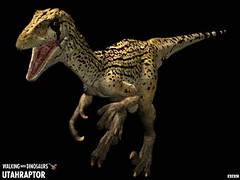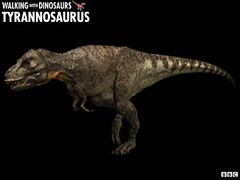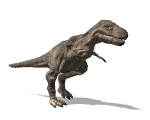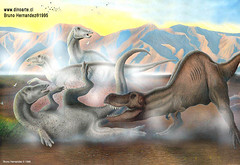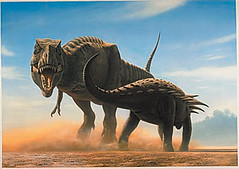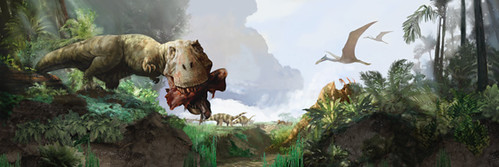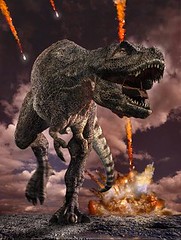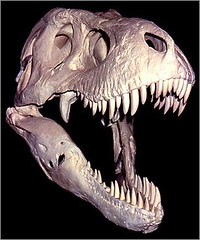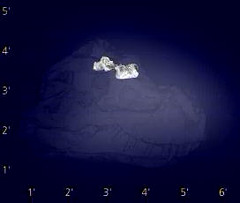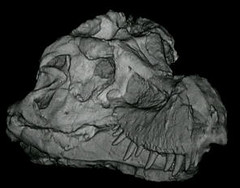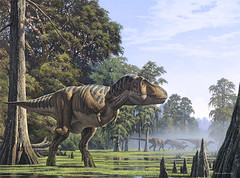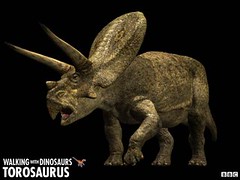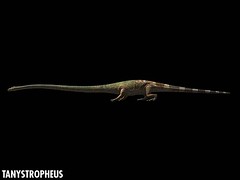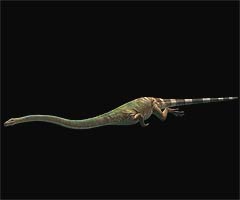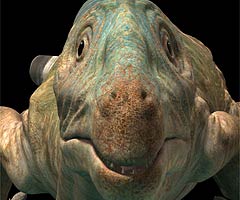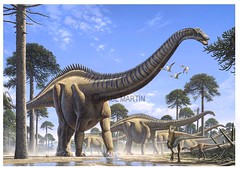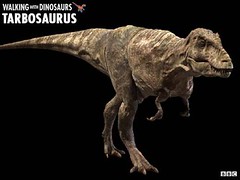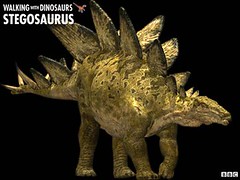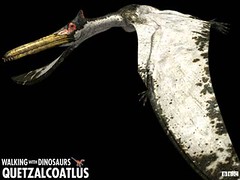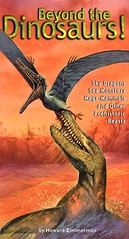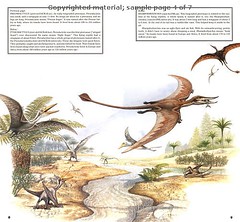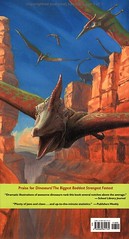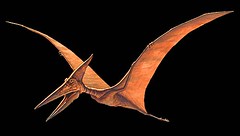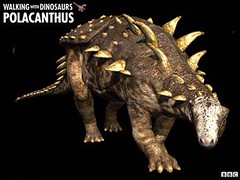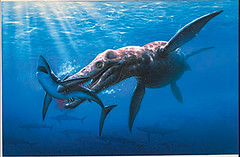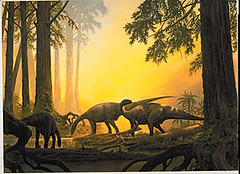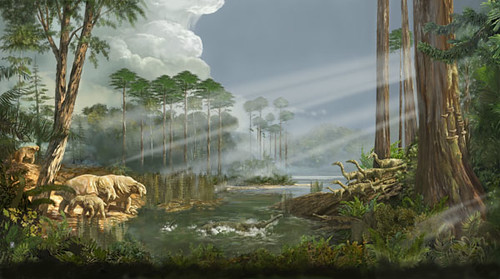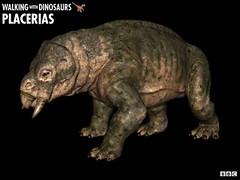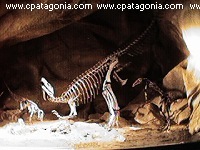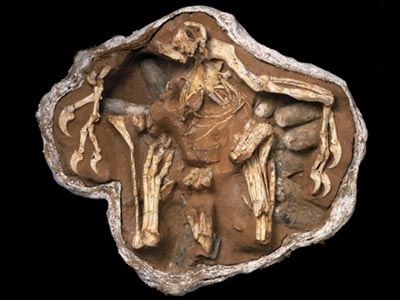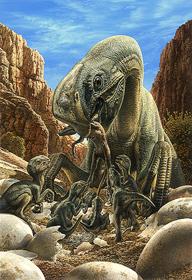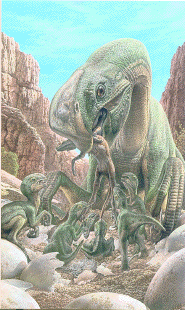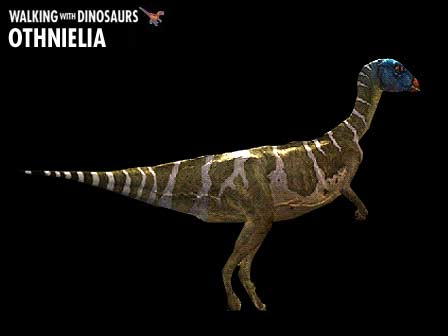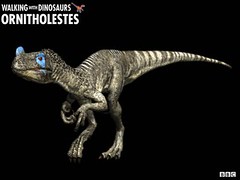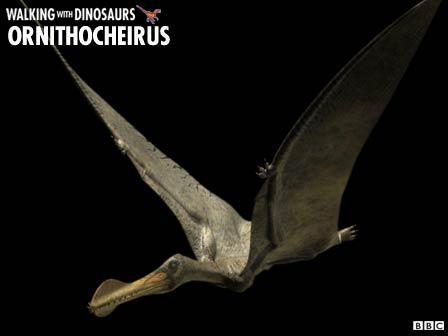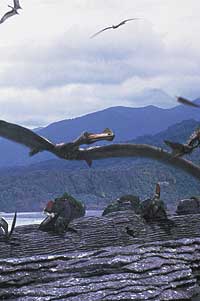Utahraptor was the largest of a group of lightly-built carnivores, called the dromaeosaurs or "swift lizards". It had large eyes, long grasping hands and powerfully clawed feet. Clearly it was carnivorous, but was distinctive in relying on a wickedly hooked, slashing claw on each foot rather than the jaws and teeth of a typical predator.
Its toe joints were specially enlarged so that its massive claw could be raised upward and backward to avoid damage while running. But when used in attack, its claw flexed forward as the animal kicked out.
To help it balance on one foot while kicking, its tail acted like an acrobat's balancing pole, being stiffened by a sheath of fine bony rods. Swinging in a wide arc its huge 20 cm slashing claw would produce terrible wounds enabling a Utahraptor to cripple and kill animals much larger than itself. The discovery of a number of skeletons of the closely related dromaeosaur, Deinonychus, around the skeleton of a large plant eater suggests that dromaeosaurs may well have hunted in packs.
Utahraptor is known from a well-preserved skeleton found in 1991 in Utah, USA and fragmentary remains from South America. It was up to 6.5m long, 2m high and a weight of almost a tonne!
The dromaeosaur group also included Velociraptor, made famous by Steven Spielberg in "Jurassic Park". For the film, Velociraptor was made twice its actual size, which seemed to be very speculative at the time. However, within a year of the release of the film, a giant dromaeosaur had been found, namely Utahraptor. So life can be stranger than fiction!
Its toe joints were specially enlarged so that its massive claw could be raised upward and backward to avoid damage while running. But when used in attack, its claw flexed forward as the animal kicked out.
To help it balance on one foot while kicking, its tail acted like an acrobat's balancing pole, being stiffened by a sheath of fine bony rods. Swinging in a wide arc its huge 20 cm slashing claw would produce terrible wounds enabling a Utahraptor to cripple and kill animals much larger than itself. The discovery of a number of skeletons of the closely related dromaeosaur, Deinonychus, around the skeleton of a large plant eater suggests that dromaeosaurs may well have hunted in packs.
Utahraptor is known from a well-preserved skeleton found in 1991 in Utah, USA and fragmentary remains from South America. It was up to 6.5m long, 2m high and a weight of almost a tonne!
The dromaeosaur group also included Velociraptor, made famous by Steven Spielberg in "Jurassic Park". For the film, Velociraptor was made twice its actual size, which seemed to be very speculative at the time. However, within a year of the release of the film, a giant dromaeosaur had been found, namely Utahraptor. So life can be stranger than fiction!
